Ptaeroxylon obliquum
| Botanical Name | Ptaeroxylon obliquum |
|||||||||||||||||||||
| Family | Rutaceae - The rue, buchu & citrus family. |
|||||||||||||||||||||
| Pronunciation | tuh-ROX-ee-lon oh-BLIK-wum |
|||||||||||||||||||||
| Common Name(s) |
IsiZulu: Ubhaqa; Umthathe
Setswana: Thate
Tshivenda: Mulari; Munari; Munukha-vhaloi
|
|||||||||||||||||||||
| Plant Group |
|
|||||||||||||||||||||
| Plant Size |
|
|||||||||||||||||||||
| Position |
|
|||||||||||||||||||||
| General Information |
|
|||||||||||||||||||||
| Specific Information | Ptaeroxylon is a direct Greek translation meaning sneeze and wood; obliquum refers to the oblique leaflets. Sneezewood gets its name from the peppery oils in the wood that cause violent sneezing when it is sawn or sanded. The tree has a small neat crown and attractive, soft foliage. The leaves are easily identified by their distinctly asymmetrical in shape. Foliage sometimes colours in autumn and winter, but the tree is not always deciduous Sneezewood is an extremely hard and durable timber tree. It often lasts longer than brass or iron when used for machine bearings. The wood is reported to "burn like paraffin"- giving a bright, hot fire. Vast quantities of huge old trees were felled for fuel and other uses in the past, and the population has never recovered. Sneezewood was used to fuel five lime kilns at Bathurst for the steam tugs at Port Alfred in the 19th century, and was also highly prized for fence posts, buildings and railway sleepers. Sneezewood beams and fence posts from the 1800's can still be seen in the homes and areas around Bathurst. Though Sneezewood is not poisonous, it has been known to cause respiratory complications linked to asthma, rhinitis, and mucosal inflammation to those who work with the wood. |
|||||||||||||||||||||
| Ad Break | ||||||||||||||||||||||
| Flowers | ||||||||||||||||||||||
| Description | small, sweetly scented, with four petals with an orange center |
|||||||||||||||||||||
| Season |
|
|||||||||||||||||||||
| Colour |
|
|||||||||||||||||||||
| Growth Rate |
|
|||||||||||||||||||||
| Plant Uses |
|
|||||||||||||||||||||
| Distribution and Habitat | from the Eastern Cape, through KwaZulu-Natal, Mpumalanga and Limpopo in South Africa to Tanzania in tropical Africa, in woodland, scrub forest and evergreen montane forest |
|||||||||||||||||||||
| Planting Suggestions | Although very drought-tolerant, this tree will perform better where rainfall is higher or its natural water supply is supplemented. It reportedly prefers shale or limey soils, but will grow successfully in most well-drained sandy or rocky soil. The old method of digging a deep hole and filling it with soil and compost has resulted in many trees failing to thrive, dying, rotting at the base or worse still, falling over in later years due to poor root development. Refer to the following sites for the best method of planting trees: International Society of Arboriculture: New Tree Planting Tree People: Plant the right way For those of you who have a clay problem try: |
|||||||||||||||||||||
| Medicinal Uses | Traditionally the Sneezewood is used medicinally as well as for ritual purposes. Bark is used as a snuff to relieve headaches and an infusion is reported to be useful in the treatment of rheumatism and arthritis. Pieces of wood are said to repel moths when placed in cupboards . The resin from the heated wood was used to treat warts and powdered bark used as a wash to kill ticks. The Chopi people of Mozambique favour the wood above all others for the manufacture of xylophone keys, which, when baked at high heat, produce an almost metallic timbre. |
|||||||||||||||||||||
| Ad Break | ||||||||||||||||||||||


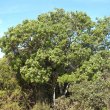
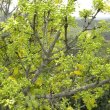
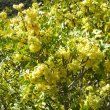
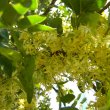
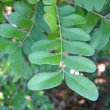
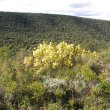
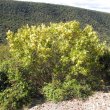



Comments
Niesboom/ Sneeze tree
Hi
Is this photo a Niesboom or Sneeze Tree
Thanks a lot
Identifying Sneezewood from the leaf
Hi G. Kotzee
The plant in your pictures is Eckebergia capensis or Cape Ash (http://kumbulanursery.co.za/plants/ekebergia-capensis).
I took a picture of the leaves of both trees together for closer comparison. Leaves of Eckebergia capensis occasionally have some leaves that are slightly off centre (but this is not the norm), have pointed tips and end in a single leaflet, whereas the Sneezewood leaves are always appreciably off centre, have rounded tips and always end in a pair of leaves.
Kind regards
Lorraine
Sneezewood
Hi,i live in Oudtshoorn and want to do a group planting of three sneeze woods,problem is it's near a garden wall.What i can derive from the internet articles is that the size will be affected by enviroment which is great because i don't want a giant tree so close to the garden wall as well as the house wall is not far from it neither.The local nursery gives it's length as 4-5m.Have i understood correctly?
Sneezewood height variations
Hi John
It is true that the environment affects the size of a tree and many giant trees remain quite small in a garden situation.
I would agree with your nursery that they will in all likelihood grow no taller than 4 - 5 meters, but do bear in mind that there are no guarantees!
Kind regards
Lorraine
Sneeze tree
Hi, we are close to Bloemhof (northwest) and want to know if the sneeze tree will grow in our area. We are getting on average 450mm pa and the winters are very cold (-8 deg C).
Regards
Hi Antonette
Hi Antonette
The Sneezewood Tree is only half-hardy. This means that it can cope with a little light frost but it will not survive the icy cold conditions you describe. You will notice under the heading 'Distribution and Habitat' above, that it only grows naturally in areas that are quite warm for most of the year and very seldom, if ever, have frost or even temperatures below 3 or 4 degrees Celcius.
Kind regards
Lorraine
Discuss this plant
Share knowledge, ask a question or give an experience.